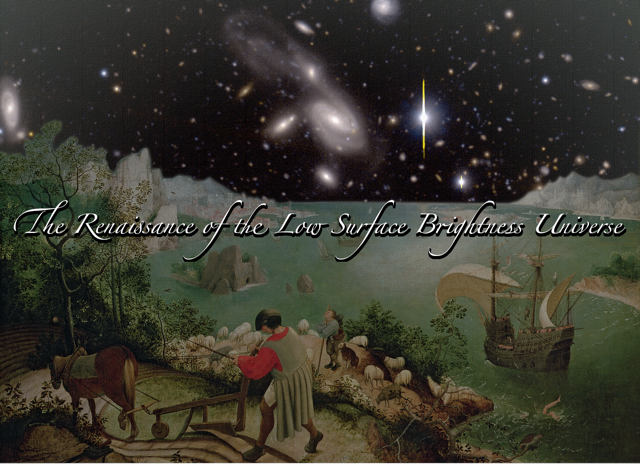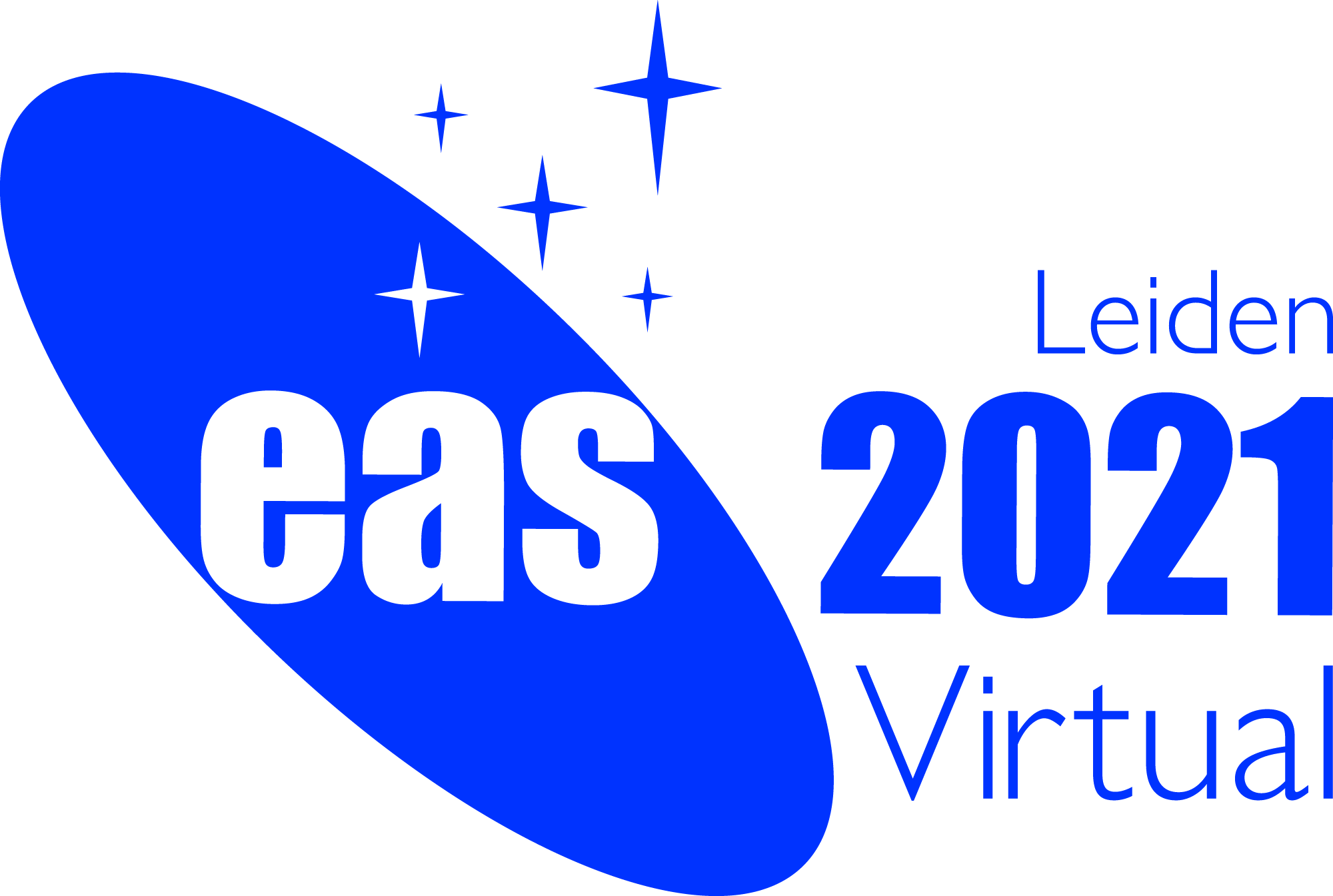 A power cut will shut down all EAS services on Tuesday, 10 January 2017 starting at 7:30 CET.
A power cut will shut down all EAS services on Tuesday, 10 January 2017 starting at 7:30 CET.
|
|
|
Symposium S12
30 June - 1 July 2021
The Renaissance of the Low Surface Brightness Universe

News:
- ***The programme is now online***: link here
- Abstract submission deadline 2 March 2021: link here (**Please, see S12 abstract submission instructions below).
- Registration is now open until 2 July 2021: link here
Aims and scope
The low surface brightness (LSB) Universe has remained almost unexplored primarily due to the technical challenges and sophisticated data treatments that it requires. Improvements in dedicated processing techniques and instrumentation, and the prospect of the next generation of deep and wide surveys using both ground and space-based telescopes have opened up this field in what has been dubbed as 'The Renaissance of the LSB Universe'.
The LSB field promises to deliver transformative insights into a wide range of phenomena, from comets and stellar outskirts to clusters of galaxies. For example, the LSB Universe plays a key role in understanding the precise details of the hierarchical nature of cosmological structure formation. Models predict that all galaxies are surrounded by a network of ultra-LSB filaments and streams, relics of past merger events that shaped the galaxies we see today. LSB galaxies could close the gap between simulations and observations and tackle open questions such as the missing satellites problem. Explaining and understanding these problems can constrain the nature of dark matter.
The time is ripe for a meeting to critically review the work within the field, from the smallest to the largest scales, bringing experts from both theory and observations together to shape a panchromatic view of this hidden Universe. The LSB Universe is key for a broad community and this symposium aims to address the most pressing questions:
- How can the state-of-the-art data analysis techniques - which preserve LSB features - be implemented in the next generation of surveys like Rubin/LSST and Euclid, where the European community has invested?
- Can we export the detailed knowledge from resolved studies of the Milky Way to other neighboring galaxies to better understand their outskirts?
- What constraints do tidal tails provide on interacting galaxies? Do LSB observations agree with numerical predictions on the amount and properties of dark matter substructures?
- Do simulations reproduce the properties of LSB galaxies? How can the next generation of telescopes resolve the kinematics and populations of their stellar and gas components?
- Can we constrain the accretion history of clusters by understanding the nature of the Intracluster light (ICL)?
Programme
Five key topics will cover the main open questions of the field, combining both observational and theoretical points of view. The list of topics is as follows:
- Instrumentation, surveys and low surface brightness observing and data processing techniques
- Milky Way and Local Group resolved stellar populations
- Low surface brightness galaxies
- Outskirts: tidal features, signs of recent interactions and halos
- Intracluster light and the accretion history of clusters of galaxies
Invited speakers
- Prof. Jean Brodie (Swinburne University of Technology - Australia)
- Dr. Arianna Di Cintio (IAC - Spain)
- Prof. Eva Grebel (ARI-Heidelberg - Germany)
- Mr. Raúl Infante-Sainz (IAC - Spain)
- Dr. Enrica Iodice (INAF-OAC - Italy)
- Prof. Kathryn V. Johnston (Columbia University - USA)
- Dr. Tomás Ruiz-Lara (Kapteyn Astronomical Institute - The Netherlands)
Scientific organisers
- Dr. Anna Ferré-Mateu (co-chair, ICCUB - Spain)
- Dr. Cristina Martínez-Lombilla (co-chair, UNSW - Australia)
- Dr. Mireia Montes (co-chair, STScI - USA)
- Prof. Magda Arnaboldi (ESO - Germany)
- Prof. Sarah Brough (UNSW - Australia)
- Prof. Pierre-Alain Duc (ObAS - France)
- Prof. Johan Knapen (IAC - Spain)
- Dr. Jorge Peñarrubia (ROE -Scotland)
**Abstract submission
The S12 abstract peer review process will be done anonymously with the authors' identities being concealed from the SOC members. This aims to provide the most unbiased outcome possible in terms of gender-balance, seniority, and institutions.
In order to ensure a correct process, here are some brief guidelines for your abstract submission:
- Do not include names or affiliations in the abstract text or title.
- In case any referencing is really necessary, please use third person neutral wording.
Contact
For enquiries please contact any of the co-chairs:
Updated on Fri May 28 16:19:46 CEST 2021
|

 A power cut will shut down all EAS services on Tuesday, 10 January 2017 starting at 7:30 CET.
A power cut will shut down all EAS services on Tuesday, 10 January 2017 starting at 7:30 CET.


